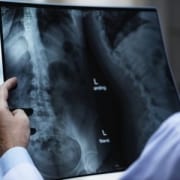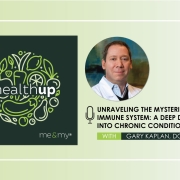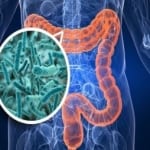“Hidden Immune System”: An Excerpt From Total Recovery
The following is the second in a series of excerpts on gut health from Dr. Gary Kaplan’s book “Total Recovery: A Revolutionary New Approach to Breaking the Cycle of Pain and Depression.”
“When scientists realized that 70 percent of our immune system was located in and around our digestive systems, it was a staggering discovery. Unlikely as it seems, one of the primary reasons for this is bugs. We are only just beginning to comprehend how much we rely on these colonies of microscopic bacteria. Our health is dependent on the trillions of bacteria in our guts.
Ever since 1674, when Dutch scientist Anton van Leeuwenhoek first observed bacteria with a single-lens microscope, some of our biggest medical breakthroughs have involved getting rid of bacteria. The process of pasteurization, discovered by Louis Pasteur, was based on killing bacteria by heating milk to make it safer to consume. In 1905, Robert Koch won the Nobel Prize for proving that bacteria can cause disease, reinforcing the idea that bacteria are best avoided.
It has long been suspected that the bubonic plague (the Black Death), which wiped out an estimated one-third of Europe’s population from the 14th to 18th centuries, was caused by an infectious bacteria. Only as recently as November 2012 did anthropologists finally confirm that this devastating disease had indeed been caused by bacteria, after carefully examining the DNA of skeletons buried in “plague pits” throughout France, Italy, Germany, and the Netherlands.
Although they hadn’t known how the plague was being passed from person to person, physicians like Nostradamus, who recommended hand washing and clean linens (free from plague bacteria), earned their reputations by reducing the spread of the disease.
It’s stories like this that have led us to, rightly, associate bacteria with disease. By the 21st century, we’ve established a trend for keeping our environments as clean as possible, improving sanitation, dispensing vaccinations, taking antibiotics at the least sign of infection, and supporting a thriving industry in antibacterial soaps and cleaners.
Our enthusiasm for cleanliness may have taken us too far. We didn’t understand the nature of bacterial flora in our intestines and how vital they were to our health. The contemporary “hygiene hypothesis” suggests that it is the continual exposure to bacteria in early childhood that helps us build strong immune systems. When children are protected from contaminants, they are actually at greater risk for asthma, allergies, food sensitivities, and immune disorders.”
1 Lipski, Digestive Wellness
2 Carlo M. Cipolla, “A Plague Doctor,” in The Medieval City, edited by Harry A. Miskimin, David Herlihy, and A. L. Udovitch (New Haven, CT: Yale University Press, 1977).
3 Lipski, Digestive Wellness
Reprinted from Total Recovery: A Revolutionary New Approach to Breaking the Cycle of Pain and Depression by Gary Kaplan, D.O., with permission from Rodale Books. Copyright (c) 2014 by Gary Kaplan, D.O..









Leave a Reply
Want to join the discussion?Feel free to contribute!